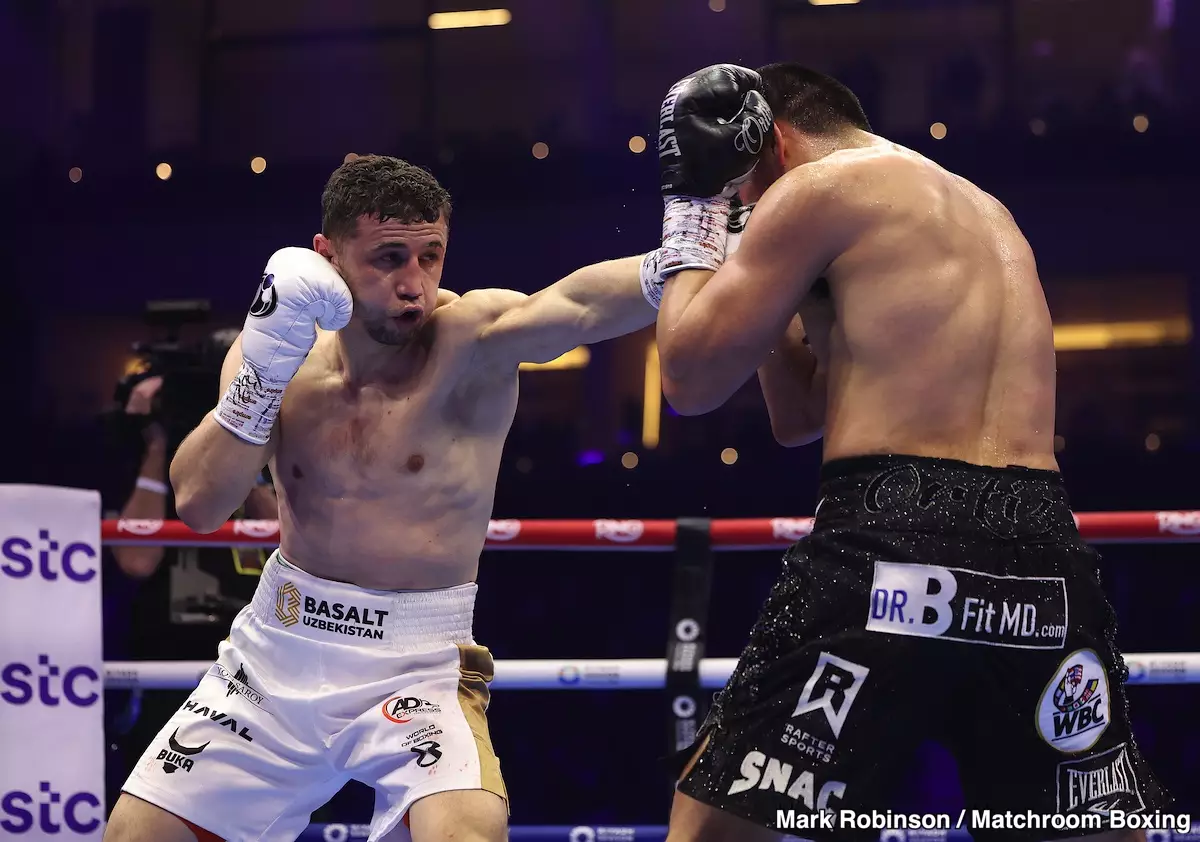This past Saturday, boxing fans witnessed an intense matchup unfold at The Venue in Riyadh, Saudi Arabia, where WBC interim junior middleweight champion Vergil Ortiz Jr. faced off against Israil Madrimov. With Ortiz entering the fight with an impressive record of 23 wins, 21 of which came by knockouts, the anticipation for his performance was palpable. Madrimov, a contender with a record of 10-2-1, also came into the bout with a commendable reputation built on power and movement. However, as the twelve rounds unfolded, the bout revealed more than just skill; it exposed the complexities of judging in professional boxing.
The fight began with Madrimov showcasing his agility and effective punching, dominating the early rounds with a calculated strategy. His ability to move and throw powerful punches gave him an edge, and many observers noted that Ortiz appeared to struggle with Madrimov’s style in the first half. As rounds progressed, Ortiz’s face showed signs of wear; particularly, heavy swelling around his eyes painted a stark picture of the impact Madrimov’s punches had left.
However, the tide seemed to shift in the second half of the fight. Ortiz, known for his resilience and power, began to regain control, applying strategic pressure that ultimately influenced the judges’ decisions. Despite the apparent momentum swing, many felt that the judges overlooked the significant damage Ortiz had endured, leading to a decision that did not accurately reflect the fight’s reality.
The final scores read 115-113 across two cards and 117-111 on the third, favoring Ortiz Jr. This outcome sparked substantial debate amid fans and analysts alike. For many, the fight seemed more evenly matched than what the scores indicated, with some believing Madrimov had narrowly escaped the decision loss at 7-5 or even possibly a 6-6 draw. The scoring mechanics in boxing have long faced scrutiny, and this bout may have only heightened concerns regarding how rounds are evaluated. It appears that judges leaned heavily on Ortiz’s pressure rather than the clean punches that Madrimov landed.
Oscar De La Hoya, Ortiz’s promoter, offered his take on the fight. In a post-match interview, he praised Ortiz and suggested that the adjustments made during the latter rounds were a testament to his fighter’s skill. However, De La Hoya’s perspective on the fight might have overlooked the clear issues Ortiz faced earlier on, representing a classic case of a promoter shielding his fighter from criticism. Such reactions underline the need for more balance and objectivity in the world of sports commentary.
Looking ahead, the specter of a potential showdown between Ortiz Jr. and Terence Crawford looms large. De La Hoya described the likelihood of making this fight happen as “very possible,” citing a renewed operational landscape due to the involvement of Turki Alalshikh and DAZN. However, the feasibility of such a bout remains questionable. Crawford, fresh off lucrative negotiations, might not be willing to risk his standing against a rising star like Ortiz without substantial financial and strategic incentive.
The landscape of boxing is notorious for its unpredictability, and while De La Hoya expresses hopeful optimism, one wonders if Crawford will seriously consider taking on Ortiz, who has proven to be a formidable fighter. The risk of such a matchup might not align with Crawford’s career trajectory as he aims to maximize his earning potential.
The fight between Vergil Ortiz Jr. and Israil Madrimov was not just a technical contest but a reflection of the gritty nature of boxing itself. While the end result favored Ortiz Jr., deeper analysis reveals significant flaws in the much-debated scoring system that may have unjustly sidelined Madrimov. As fans of the sport, the hope is that future fights bring clarity and fairness in both the ring and in the judges’ scores. In boxing, where fortunes can shift in a heartbeat, every match is a reminder of the fine line between triumph and defeat.


Leave a Reply